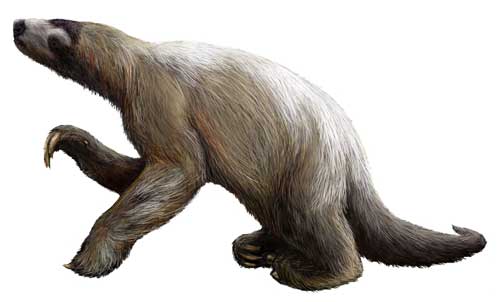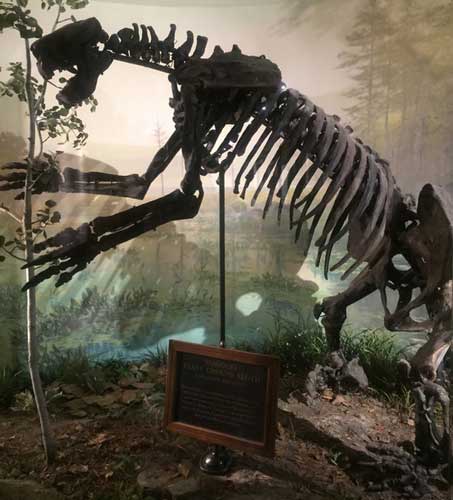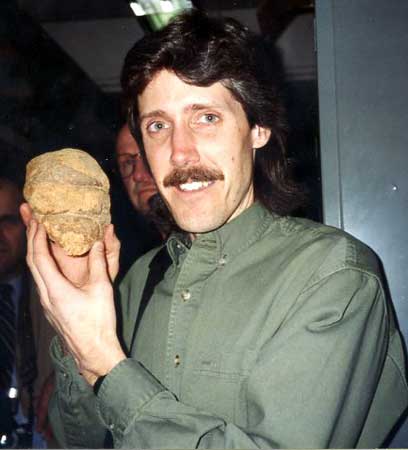|
I bet everyone, at some point in their lives, wishes they had a time machine. I am no exception, and the reason why is that I would love to go back and see some of the awesome animals that are now extinct. Those of you who have read Diffusion, Infusion, or Savage know that the Lamotelokhai (the mysterious substance that has been hiding on our planet for millions of years) has vast knowledge of every living thing it has ever encountered. And it can recreate any creature from the past. As Samuel Inwood aptly states in my upcoming novel, Profusion, "The Lamotelokhai works in many media, but in my opinion it is a master of the medium of life. It sculpts and paints living organisms as if it were a god." But when such power is wielded without regard to consequences, chaos can result, as you will soon see when Profusion comes out in a few months. One of the many strange creatures encountered in Profusion is a Giant Ground Sloth. There were numerous species of ground sloths, and they became extinct about 10,000 years ago. Ground sloths lived throughout South America and most of North America. Not surprisingly, their extinction corresponds closely with the appearance of humans in North and South America, and it is thought that over-hunting by humans contributed to their demise. Amazing Facts about extinct ground sloths: The largest ground sloth (10 feet long and 2,200 lbs) was named after Thomas Jefferson. Before he became the third president of the US, he was very interested in fossils (a gentleman naturalist, like Samuel in my novel Savage). A friend sent him some bones found in a cave and Jefferson figured out that they belonged to a new species of ground sloth, which was then given the name, Megalonyx jeffersonii. The skeleton of this species in the photo below was found in a cave in my home state of Missouri. Ground sloths were herbivores (plant eaters), and their teeth were flat and peg-like. They also had long, curved claws on their front feet for grabbing limbs and stripping off the leaves (and maybe for protection from predators like the saber-toothed cats that lived at the same time). They had huge hind feet and a long, fat tail they used to stabilize themselves as they stood up (like a tripod) to reach higher branches. One group of ground sloths became aquatic mammals! Yep, you read this correctly. About 8 million years ago, sloths of the genus Thalassocrus lived near water and started eating water plants. Within a few million years these critters had become fully aquatic and could swim like sea lions. Sadly, the aquatic sloths disappeared about 4 million years ago. In 1995, Trish and I were lucky enough to get a behind-the-scenes tour of the basement storage areas of the Smithsonian Museum. Our guide opened a drawer, took out a large object, and explained that it was well-preserved giant sloth poop. He asked if I wanted to hold it. Are you kidding me? Of course did! (this photo was when I had no gray hair, no beard, and I was running marathons--please don't laugh). As I'm sure you know, there are several species of sloths living today (six, to be exact). They are much smaller and are called tree sloths. But they will be a topic of a future post.
So the giant ground sloth deserves a place in the T.A.H.O.F. (Topgallant Animal Hall of Fame). Fun Fact: Topgallant was originally a nautical term, a name for the head of the topmast. It eventually evolved into an adjective to describe anything lofty or grand. In other words, it means "awesome."
0 Comments
Leave a Reply. |
Stan's Cogitations
Everyone needs a creative outlet. That's why I write. Archives
July 2024
|




 RSS Feed
RSS Feed